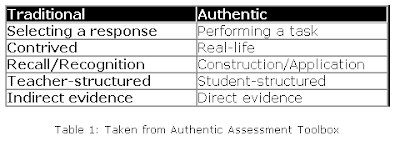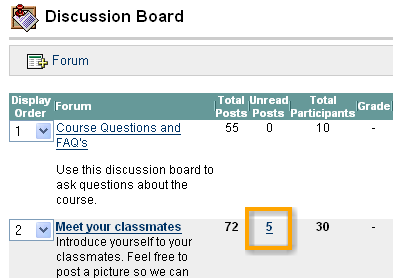How do you know when a student has truly learned something? Testing an isolated skill or a memorized fact does not effectively measure a student's capabilities. In order to accurately evaluate what a person has learned, an assessment method needs to examine his or her collective abilities. This is authentic assessment.
Authentic assessment presents students with “real-world” challenges that require them to apply their relevant skills and knowledge. It measures their ability to perform a task in the way professionals in the field would perform it. Evaluation is based upon how well the learner demonstrates the behavior the learning is intended to produce.
The table below compares the attributes of traditional and authentic assessment on a continuum. While assessments do vary considerably in the forms they take, traditional assessment usually fits into the attributes on the left side of the continuum and authentic on the right.
 This does not mean that traditional forms of assessment (multiple choice, fill-in-the-blank, true/false, and matching tests or quizzes) should not be used. Traditional and Authentic assessments can be used together in different combinations to gauge learning. The key is determining which method is most appropriate for the material being taught. Look at this example from Authentic Assessment Toolbox by Jon Mueller:
This does not mean that traditional forms of assessment (multiple choice, fill-in-the-blank, true/false, and matching tests or quizzes) should not be used. Traditional and Authentic assessments can be used together in different combinations to gauge learning. The key is determining which method is most appropriate for the material being taught. Look at this example from Authentic Assessment Toolbox by Jon Mueller:“…if I had to choose a chauffeur from between someone who passed the driving portion of the driver's license test but failed the written portion or someone who failed the driving portion and passed the written portion, I would choose the driver who most directly demonstrated the ability to drive, that is, the one who passed the driving portion of the test. However, I would prefer a driver who passed both portions. I would feel more comfortable knowing that my chauffeur had a good knowledge base about driving (which might best be assessed in a traditional manner) and was able to apply that knowledge in a real context (which could be demonstrated through an authentic assessment).”
Whether you choose to use traditional assessment, authentic assessment, or a combination, remember that assessments should be designed so that student learning is clear (measureable) and directly related to the learning competencies. Also, remember to provide your students continuous feedback throughout the course, using both formative and summative assessments.
Helpful resources:
- Authentic Assessment Toolbox: http://jonathan.mueller.faculty.noctrl.edu/toolbox/whatisit.htm
- Rubrics for Web Lessons: http://webquest.sdsu.edu/rubrics/weblessons.htm
- Authentic Assessment Overview:
http://www.teachervision.fen.com/teaching-methods-and-management/educational-testing/4911.html
